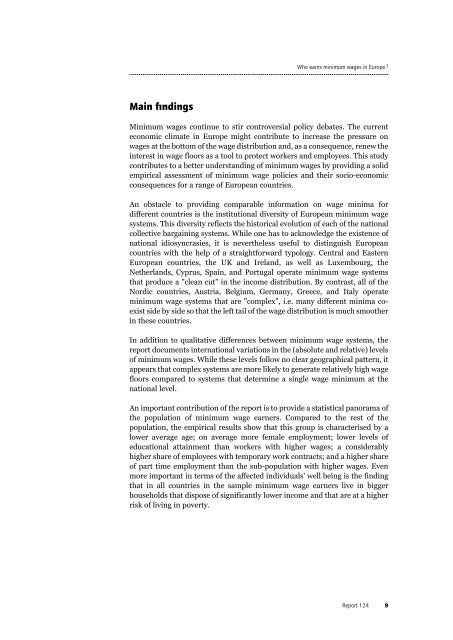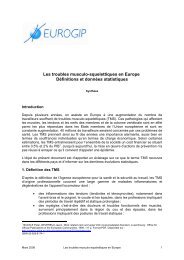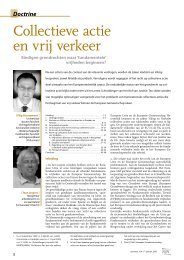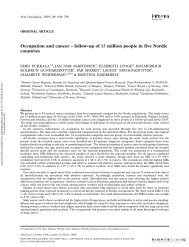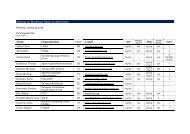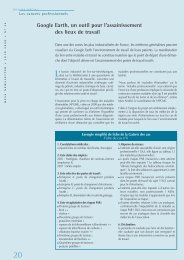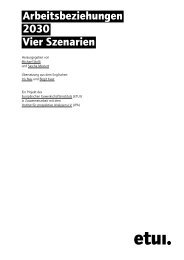Who earns minimum wages in Europe - European Trade Union ...
Who earns minimum wages in Europe - European Trade Union ...
Who earns minimum wages in Europe - European Trade Union ...
Create successful ePaper yourself
Turn your PDF publications into a flip-book with our unique Google optimized e-Paper software.
Ma<strong>in</strong> f<strong>in</strong>d<strong>in</strong>gs<br />
<strong>Who</strong> <strong>earns</strong> <strong>m<strong>in</strong>imum</strong> <strong>wages</strong> <strong>in</strong> <strong>Europe</strong> ?<br />
M<strong>in</strong>imum <strong>wages</strong> cont<strong>in</strong>ue to stir controversial policy debates. The current<br />
economic climate <strong>in</strong> <strong>Europe</strong> might contribute to <strong>in</strong>crease the pressure on<br />
<strong>wages</strong> at the bottom of the wage distribution and, as a consequence, renew the<br />
<strong>in</strong>terest <strong>in</strong> wage floors as a tool to protect workers and employees. This study<br />
contributes to a better understand<strong>in</strong>g of <strong>m<strong>in</strong>imum</strong> <strong>wages</strong> by provid<strong>in</strong>g a solid<br />
empirical assessment of <strong>m<strong>in</strong>imum</strong> wage policies and their socio-economic<br />
consequences for a range of <strong>Europe</strong>an countries.<br />
An obstacle to provid<strong>in</strong>g comparable <strong>in</strong>formation on wage m<strong>in</strong>ima for<br />
different countries is the <strong>in</strong>stitutional diversity of <strong>Europe</strong>an <strong>m<strong>in</strong>imum</strong> wage<br />
systems. This diversity reflects the historical evolution of each of the national<br />
collective barga<strong>in</strong><strong>in</strong>g systems. While one has to acknowledge the existence of<br />
national idiosyncrasies, it is nevertheless useful to dist<strong>in</strong>guish <strong>Europe</strong>an<br />
countries with the help of a straightforward typology. Central and Eastern<br />
<strong>Europe</strong>an countries, the UK and Ireland, as well as Luxembourg, the<br />
Netherlands, Cyprus, Spa<strong>in</strong>, and Portugal operate <strong>m<strong>in</strong>imum</strong> wage systems<br />
that produce a "clean cut" <strong>in</strong> the <strong>in</strong>come distribution. By contrast, all of the<br />
Nordic countries, Austria, Belgium, Germany, Greece, and Italy operate<br />
<strong>m<strong>in</strong>imum</strong> wage systems that are "complex", i.e. many different m<strong>in</strong>ima coexist<br />
side by side so that the left tail of the wage distribution is much smoother<br />
<strong>in</strong> these countries.<br />
In addition to qualitative differences between <strong>m<strong>in</strong>imum</strong> wage systems, the<br />
report documents <strong>in</strong>ternational variations <strong>in</strong> the (absolute and relative) levels<br />
of <strong>m<strong>in</strong>imum</strong> <strong>wages</strong>. While these levels follow no clear geographical pattern, it<br />
appears that complex systems are more likely to generate relatively high wage<br />
floors compared to systems that determ<strong>in</strong>e a s<strong>in</strong>gle wage <strong>m<strong>in</strong>imum</strong> at the<br />
national level.<br />
An important contribution of the report is to provide a statistical panorama of<br />
the population of <strong>m<strong>in</strong>imum</strong> wage earners. Compared to the rest of the<br />
population, the empirical results show that this group is characterised by a<br />
lower average age; on average more female employment; lower levels of<br />
educational atta<strong>in</strong>ment than workers with higher <strong>wages</strong>; a considerably<br />
higher share of employees with temporary work contracts; and a higher share<br />
of part time employment than the sub-population with higher <strong>wages</strong>. Even<br />
more important <strong>in</strong> terms of the affected <strong>in</strong>dividuals' well be<strong>in</strong>g is the f<strong>in</strong>d<strong>in</strong>g<br />
that <strong>in</strong> all countries <strong>in</strong> the sample <strong>m<strong>in</strong>imum</strong> wage earners live <strong>in</strong> bigger<br />
households that dispose of significantly lower <strong>in</strong>come and that are at a higher<br />
risk of liv<strong>in</strong>g <strong>in</strong> poverty.<br />
Report 124<br />
9


